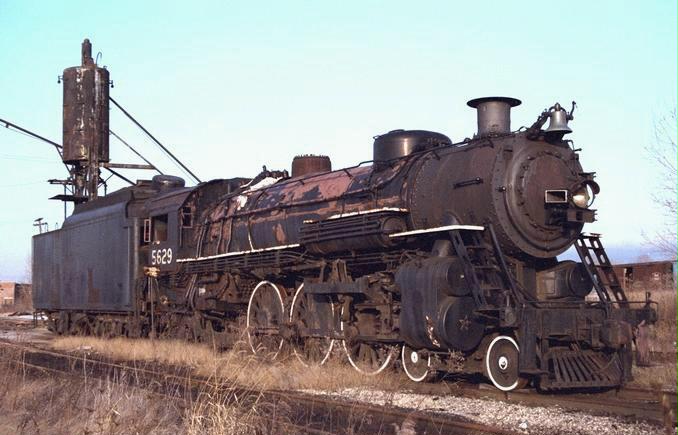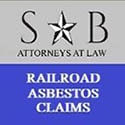
Asbestos, a term that evokes images of industrial progress and, paradoxically, severe health crises, has been a double-edged sword throughout the 20th century. Its extensive use across various sectors, including the railroad industry, has left a legacy of illness and litigation that continues to unfold today. Railroad workers, in particular, stand at the intersection of industrial advancement and occupational hazard, having been exposed to asbestos under conditions that, by today’s standards, are unimaginably unsafe. This post aims to explore the intricate connections between asbestos exposure and stomach cancer, the particular risks faced by those in the railroad industry before the significant regulatory changes of the 1980s, and how legal avenues, particularly through the advocacy of Sammons & Berry P.C., provide a beacon of hope for victims seeking compensation without the daunting prospect of courtroom battles.
Understanding Asbestos and Its Use
The Nature and Properties of Asbestos
Asbestos is a term that encompasses a group of six naturally occurring silicate minerals, each distinguished by its unique fibrous structure and resistance to heat, chemicals, and electrical currents. These minerals include chrysotile, amosite, crocidolite, tremolite, anthophyllite, and actinolite, each possessing fibers that can be woven or mixed into various materials to enhance their durability and resistance to degradation. Chrysotile, also known as white asbestos, is the most common form and was widely used across industries due to its abundance and versatility.
The fibers of asbestos are microscopic, flexible, and possess tensile strength comparable to steel, making them an invaluable component in construction materials, friction products, and insulation. Its ability to be pulled into a fluffy consistency allowed for its use in spray-on insulation and fireproofing applications, providing protection against high temperatures and fire. Despite its beneficial properties, the fibrous nature of asbestos poses significant health risks when disturbed, as the fibers can become airborne and easily inhaled or ingested by those in proximity.
Asbestos in the Railroad Industry: A Double-Edged Sword
In the railroad sector, asbestos found extensive applications, lauded for its ability to protect against the intense heat generated by steam and diesel locomotives. Its use in insulation for boilers, fireboxes, and piping, as well as in brake pads and gaskets, was standard practice. Asbestos-containing materials (ACMs) were also used in constructing railroad buildings, repair shops, and even in the protective clothing worn by workers to shield them from burns and heat.
This pervasive use of asbestos made it a staple in the railroad industry, but it also sowed the seeds for widespread occupational exposure. Workers involved in the maintenance, repair, or overhaul of locomotives and railroad infrastructure were particularly at risk. The process of cutting, drilling, or otherwise disturbing asbestos-containing materials released fibers into the air, creating a hazardous work environment. The full extent of these dangers remained underappreciated or deliberately downplayed until mounting evidence and public awareness forced a reevaluation of asbestos use in the late 20th century.
The Dire Health Impacts of Asbestos Exposure
The health consequences of asbestos exposure are severe and multifaceted, affecting not only the respiratory system but also the linings of vital organs. Asbestosis is a chronic condition characterized by the scarring of lung tissue, leading to progressive respiratory distress. Lung cancer and mesothelioma, a malignancy of the pleural and peritoneal linings, are directly linked to asbestos exposure, with mesothelioma being almost exclusively associated with such exposure. These cancers manifest decades after the initial exposure, making early detection and linkage to occupational exposure challenging.
Beyond these well-documented conditions, asbestos exposure is also implicated in causing stomach and colorectal cancers, as well as other pleural abnormalities. The ingestion of asbestos fibers, which can occur when fibers contaminate the hands or face or are released into the air and settle on food and beverages, introduces these fibers into the digestive tract, where they can embed in the stomach or intestinal lining. Over time, this can lead to inflammation, cellular damage, and, eventually, cancer.
The Link Between Asbestos Exposure and Stomach Cancer
Stomach cancer, or gastric cancer, develops after asbestos fibers are ingested, lodging in the stomach lining. This can occur through the swallowing of saliva that has trapped airborne fibers, or through the consumption of contaminated food or beverages. The embedded fibers can cause chronic irritation, inflammation, and cellular damage, leading to cancerous mutations over time.
The Unique Vulnerability of Railroad Workers
Railroad workers were particularly vulnerable to asbestos exposure due to the nature of their work and the environments in which they worked. Maintenance and repair of locomotives and other railroad equipment often involved handling asbestos-containing materials without protective gear or adequate ventilation. The lack of awareness and safety regulations until the 1980s meant that many workers were exposed to high levels of asbestos without any understanding of the risks involved.
Navigating the Complex Legal Landscape for Asbestos Compensation
The journey through the legal framework for asbestos compensation in the United States is marked by a labyrinth of litigation, landmark legislation, and the strategic formation of trust funds by companies bankrupted by asbestos-related liabilities. This intricate system has evolved over decades, reflecting a continuous battle between victims seeking justice and the industries implicated in asbestos exposure. Victims, including a significant number of retired railroad workers, embark on a formidable quest for justice and compensation, often confronting a maze of legal obstacles and procedural intricacies.
Historical Context and Legal Evolution
The history of asbestos litigation in the United States is a saga of evolving legal doctrines, beginning with the first waves of lawsuits in the latter half of the 20th century. These legal battles highlighted the dire consequences of occupational asbestos exposure and set the stage for a broad recognition of corporate responsibility towards affected workers. As litigation swelled, so did the understanding of asbestos-related diseases, leading to significant legislative actions aimed at protecting workers and facilitating compensation for victims. This legal evolution is crucial for understanding the current landscape, where victims navigate a complex amalgamation of state and federal laws, judicial precedents, and specialized legal mechanisms designed for asbestos compensation.
The Role and Impact of Asbestos Trust Funds
In response to the burgeoning financial liabilities faced by companies responsible for asbestos exposure, and the subsequent bankruptcies, asbestos trust funds emerged as a pivotal solution. These trust funds were established through bankruptcy proceedings to ensure that victims could receive compensation, even as the responsible companies restructured or dissolved. Serving as a crucial component of the legal framework, asbestos trust funds offer a streamlined alternative to the traditional litigation process, aiming to distribute compensation equitably among victims. The creation and operation of these funds mark a significant shift in the landscape, providing a path to compensation that is both less adversarial and more accessible to victims.
Sammons & Berry P.C.: Pioneers in Asbestos Compensation
Amidst the complex legal terrain, Sammons & Berry P.C. distinguishes itself through its unwavering dedication to assisting victims of asbestos exposure. The firm’s specialization in the claims process for asbestos trust funds sets it apart from traditional legal practices that often navigate through costly and protracted courtroom battles.
Innovative Strategies for Victim Compensation
Sammons & Berry P.C. has developed an innovative approach that focuses on understanding the nuanced requirements of asbestos trust funds and leveraging this knowledge to benefit their clients. By meticulously preparing and presenting claims, the firm ensures that the compensation process is not only effective but also aligned with the unique circumstances of each victim. This tailored approach reflects a deep commitment to addressing the individual needs of those affected by asbestos exposure, providing them with a sense of dignity and personal attention throughout the legal process.
A Court-Free Path to Justice
The philosophy underpinning Sammons & Berry P.C.’s approach is the belief that victims of asbestos exposure should be spared the additional burden of navigating through traditional courtroom litigation. The firm’s dedication to securing compensation without requiring clients to set foot in a courtroom is more than a strategic choice; it is a reflection of a compassionate understanding of the victims’ situations. By removing the hurdles of courtroom proceedings, Sammons & Berry P.C. not only simplifies the compensation process but also significantly mitigates the emotional and psychological stress that legal battles can exacerbate. This court-free path to justice represents a paradigm shift in how legal support is provided to asbestos victims, emphasizing empathy, efficiency, and direct action in securing deserved compensation.
Asbestos Attorneys for Retired Railroad Workers
The battle against the lingering effects of asbestos exposure is far from over, especially for those in the railroad industry who bore the brunt of occupational exposure before safety regulations were overhauled. Legal firms like Sammons & Berry P.C. play an indispensable role in this ongoing struggle, offering expertise, compassion, and a streamlined path to compensation. For victims and their families, understanding the risks of asbestos, recognizing the symptoms of related diseases, and knowing the legal options available are crucial steps towards securing justice and financial support. As awareness grows and legal advocates continue their work, there is hope for those affected by asbestos-related diseases to find the compensation and closure they deserve.
See if you qualify for compensation
Sammons & Berry, P.C.
800-519-1440
View our Google Listing
View our Facebook


